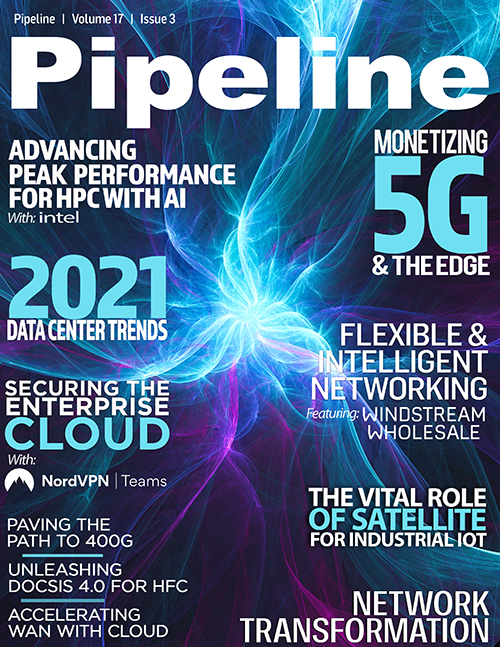Evolving Onwards: Data Centers in 2021 and Beyond
By: Todd Murren

2020 has been a momentous year. A global health crisis has fundamentally shifted the way we live, work and communicate — perhaps forever. In the wake of social-distancing protocols, digital tools have become a day-to-day mainstay, driving our reliance on networks, data centers and the data that flows through them to an unprecedented level. In just the first few weeks of March 2020, reports observed an 18 percent increase in U.S. in-home data usage compared to the same period in 2019. Average daily data usage rates exceeded 16.6 GB, all by virtue of people connecting to business frameworks, online schooling, streaming applications, and more.
Technology and communications providers have rushed to pivot in recent months, becoming more agile and more capable in order to better serve the rising demands of enterprises and communities. However, the impacts of 2020 are far from over. The developments we’re seeing now are only the initial indications of what is sure to be an accelerated move toward more remote workplaces, online application use and complex IT infrastructures. This begs the question, how are we preparing for ongoing change?
The hybrid data center
Hybrid data centers have continued to gain traction as data mobility, dynamic application usage and distributed IT frameworks demand greater agility, geographic reach, optimized performance and more. Hybrid facilities are data centers that employ virtualization, software-defined networking and cloud connectivity to help distribute enterprise workloads across a variety of physical and cloud-based environments. Because the advantages of private or public clouds and data centers each suit unique use cases, a hybrid facility allows businesses to allocate their workloads flexibly to suit individualized application needs. This has become imperative for business success in recent months as workplace models change.
Now more than ever, companies are granular. As more demands need to be met, more partners, digital platforms and web-based services are being integrated. IT is now far from a one-stop-shop situation. Still, as businesses are being pressured to adapt and remain ahead of change, they’re looking to shift control to maintain simplicity where possible. This means outsourcing. As digital diversification remains strong in the face of new requirements, the hybrid data center is likely to continue gaining popularity for its ability to cost-effectively meet a variety of needs across an array of technological destinations.
Colocation: the golden goose?
Increasingly complex enterprise requirements are also directing data center decisions in a much more fundamental way. Today, we see that for many businesses, the choice between managing and maintaining an on-premises data center or outsourcing to a colocation provider is becoming more clear-cut. Data centers must now be able to reliably accomplish more than what many in-house teams can reasonably achieve, and as complexity rises, so does the cost of maintenance. These are just a couple of the factors tipping the scales from a cost-benefit perspective. Overall, in an age when the stakes are higher than ever and a misstep in the data center can spell disaster, more enterprises are looking to leave behind the data center operator role.
Many organizations are finding that housing their privately owned IT in a third-party, Tier III data center, which is maintained by expert teams as a core competency, is an ideal solution. Colocation does more than help enterprises achieve optimized security, reliability and agility when compared to on-premises facilities; it also reduces cost and complexity and allows internal resources to be trained on strategic growth. It’s been predicted that the global colocation market will reach $62.3 billion by 2022 at a compound annual growth rate of 14.6 percent, and we’re likely to see market share continue to exceed these marks.
Keeping it simple
With digital transformations being accelerated, it’s becoming clear that time is a luxury. Today, speed seems to practically rival efficacy when it comes to integrating new IT, which means that simplified plug-and-play data center solutions are in demand. Enterprises can’t afford to deal with 15 network companies and eight data centers in order to figure out what they need. They require a consumer environment that is navigable and accessible so they can get a solution now.
We’re seeing the traditional data center service and site selection process undergoing a shift. Many potential tenants are seeking out third-party technology consultants that broker and streamline the decision-making process, changing the way data center services are sold and consumed. Now, distance is being created between the provider and the tenant, saving the buyer time by allowing them to bypass the process of establishing and selecting from a pool of many prospective operator partners. This means that we may be seeing a departure from high-touch, service-oriented customer approaches, at least when it comes to attracting tenants. While this is a change that may make some data center providers feel ill at ease, it’s all-in service of agility — an indispensable asset in a rapidly evolving world.



















